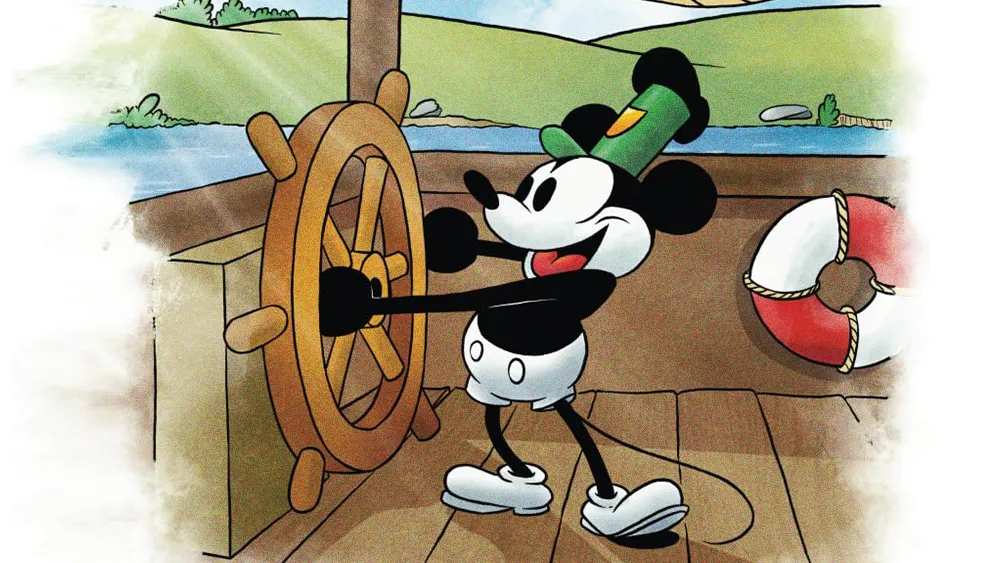When Steamboat Willie entered the public domain last year, law firm Morgan & Morgan quickly put Mickey Mouse to work in a commercial. The animated spot showed Mickey and Minnie urging viewers to "sue the mouse" and call the firm. Soon after, Morgan & Morgan filed a lawsuit asking a court to declare the ad legal before Disney had the chance to respond. On paper, it's an intellectual property dispute. But in practice, the filing amplifies the ad itself. Now, some experts say it also begs the question: Has the courtroom itself become part of the ad campaign?
For an expert's take, we spoke with Marc Misthal, Principal and Practice Group Leader at Offit Kurman. A veteran IP lawyer with 25 years in the field, he has spent his career guiding companies through high-stakes battles over names, logos, and characters, and advising on how to protect the brand assets that carry the most value.
The case pushes intellectual property law into unfamiliar territory, Misthal says. "We're entering some territory that we haven't been in before," he said. While precedent exists for disputes over the reuse of public domain characters in new artistic works, like the many Sherlock Holmes stories, Misthal believes the central issue here is the distinction between art and advertising.
Art or ad?: "The courts seem to be saying it's fine to repurpose a public domain character to create a new creative work. But this isn't a new book or a new movie. It's a commercial where you unmistakably have Mickey and Minnie Mouse promoting a law firm. I'm not sure that characters are available to others to promote their goods or services, and that's really what the question is."
But the focus on copyright may be a red herring, Misthal says. Disney’s active trademarks on the Mickey Mouse character change the legal equation entirely. In fact, it creates a legal obligation for the company to police its intellectual property, he says. "Under the law, trademark owners have an obligation to enforce their rights, and if you don't, you run the risk of losing them. At one point, the term 'escalator' was a trademark, and it became a generic word."
Turning a public domain character into a creative work is familiar ground, Misthal clarifies. But turning it into an ad is not. At some point, Disney will notice, he says. "When it comes to intellectual property, Disney is a pretty sophisticated entity. They know what they’re doing. Disney is aggressive in enforcing their rights. They recently sued a jewelry maker for using Steamboat Willie. But I’m not sure that’s enough for a court to find a real dispute. Without that, Disney could ask the court to dismiss the case."
Cart before the horse: Instead of speculating on the law firm's motives, Misthal points to a series of facts that, taken together, seem to build a strong circumstantial case for the "marketing ploy" theory. First, the legal procedure departs from the typical playbook. Usually, a declaratory judgment case is a defensive move filed in response to a direct threat, like a cease-and-desist letter. But this lawsuit was preemptive, he explains. "Declaratory judgment cases are common in IP. Usually, the way they come about is somebody sends a cease and desist letter, and in response to that, you file a declaratory judgment action. What happened here was a little bit different."
Animated intentions: Then there’s the ad itself, a noticeable turn to animation for a firm known for its bright OOH advertisements and live-action commercials. "Of the prior commercials I recall having seen from the law firm, none of them were animated," Misthal says. That departure makes the campaign feel less like a routine ad buy and more like a deliberate attempt to spark headlines.
Straying from specialty: Finally, there's the nature of the firm itself: Morgan & Morgan is a personal injury firm representing itself in an IP battle against Disney. "The advice I usually give clients is that if you have a matter in a specific area, you want somebody who specializes in that area. You can analogize it to going to a doctor. If you have a heart issue, you're not going to go to a dermatologist."
So, is it all just a savvy marketing ploy? Misthal’s response is careful, reflecting both his legal training and his unwillingness to wade into speculation. "I can see why somebody would come to that conclusion. But I have no idea what their intentions were. We can all guess and speculate, but that’s all it is." For him, the more useful takeaway isn’t to second-guess motives but to watch how the courts draw the line between art, advertising, and trademark enforcement. Whatever the outcome, the case demonstrates how quickly a courtroom filing can double as headline fodder.

